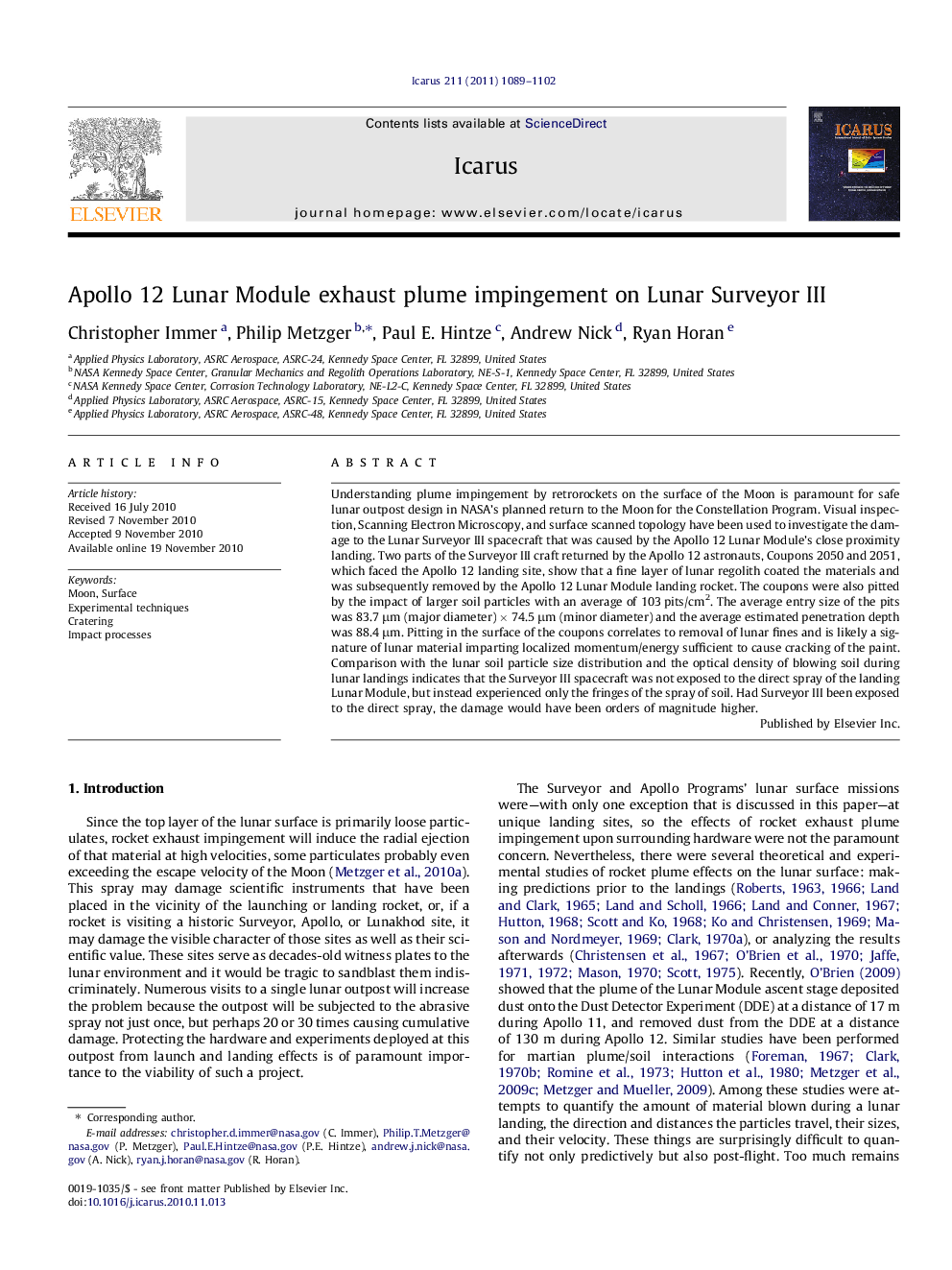| کد مقاله | کد نشریه | سال انتشار | مقاله انگلیسی | نسخه تمام متن |
|---|---|---|---|---|
| 1773943 | 1021152 | 2011 | 14 صفحه PDF | دانلود رایگان |

Understanding plume impingement by retrorockets on the surface of the Moon is paramount for safe lunar outpost design in NASA’s planned return to the Moon for the Constellation Program. Visual inspection, Scanning Electron Microscopy, and surface scanned topology have been used to investigate the damage to the Lunar Surveyor III spacecraft that was caused by the Apollo 12 Lunar Module’s close proximity landing. Two parts of the Surveyor III craft returned by the Apollo 12 astronauts, Coupons 2050 and 2051, which faced the Apollo 12 landing site, show that a fine layer of lunar regolith coated the materials and was subsequently removed by the Apollo 12 Lunar Module landing rocket. The coupons were also pitted by the impact of larger soil particles with an average of 103 pits/cm2. The average entry size of the pits was 83.7 μm (major diameter) × 74.5 μm (minor diameter) and the average estimated penetration depth was 88.4 μm. Pitting in the surface of the coupons correlates to removal of lunar fines and is likely a signature of lunar material imparting localized momentum/energy sufficient to cause cracking of the paint. Comparison with the lunar soil particle size distribution and the optical density of blowing soil during lunar landings indicates that the Surveyor III spacecraft was not exposed to the direct spray of the landing Lunar Module, but instead experienced only the fringes of the spray of soil. Had Surveyor III been exposed to the direct spray, the damage would have been orders of magnitude higher.
Research highlights
► We study how the ejecta of Apollo 12 Lunar Module landing damaged Lunar Surveyor III.
► Particle impacts caused pitting and cracking along with a net removal of dust.
► Coupons have 103 pits/cm2, with 83.7 x 74.5 μm mean size and 88.7 μm mean depth.
► Optical density of the blown dust sheet predicts orders-of-magnitude more pitting.
► Surveyor III was in a crater below the ejecta sheet, avoiding most of the damage.
Journal: Icarus - Volume 211, Issue 2, February 2011, Pages 1089–1102